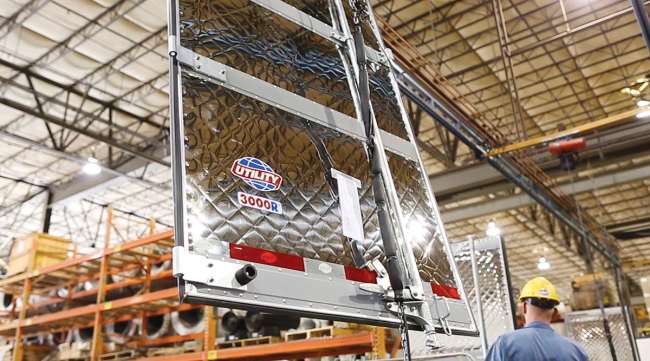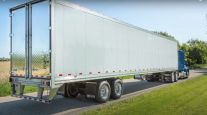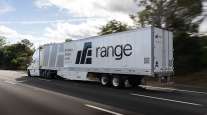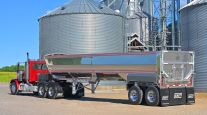Senior Reporter
US Trailer Orders Hit 30-Year Low in April

[Stay on top of transportation news: Get TTNews in your inbox.]
U.S. trailer orders in April fell to an all-time low after heavy cancellations, ACT Research reported, describing another reverberation of the COVID-19 pandemic.
The net order volume crashed to 209, according to ACT, as 5,700 new trailer orders were placed in April, but cancellations almost completely offset them. Fleets backed away from prior commitments in a rapid reaction to the unprecedented business conditions generated by the economic shutdown.
A year earlier, net orders were 14,577.
ACT Research: U.S. Trailer Net Orders Dropped 97% Sequentially in April, -99% Y/Yhttps://t.co/jLk8vilQzZ — ACT Research (@actresearch) May 21, 2020
ACT forecast the trailer industry faces a massive retrenchment compared with the booming demand and stressed supply chains over the past three years.
The path out of that retrenchment will “likely will be arduous,” said Frank Maly, director of commercial vehicle analysis at ACT.
At the same time, April truck tonnage declined 11.3% compared with year-ago levels, the steepest year-over-year decline since 2009, American Trucking Associations reported.
April's monthly decline in #tonnage was the largest in 26 years, showing just how much trucking has been impacted by the national response to #COVID19. — American Trucking (@TRUCKINGdotORG) May 19, 2020
FTR pegged preliminary net orders at 300, the lowest mark since 1990.
“There is not a lot of good news to report,” said Don Ake, vice president of commercial vehicles at FTR. “We are in brand-new territory. We have never shut down the economy on purpose before, so you have no idea on this restart. The wild card is still the virus itself. Tell me what the virus is like in three months and I’ll tell you what the economy is like, what the equipment markets are like.”
Charles Willmott, principal of WillGo Transportation Consulting and a former trailer maker executive, forecast North American trailer production to drop to 110,000 units this year compared with 325,000 a year earlier, then fall to 90,000 in 2021 before returning to 325,000 in 2024.
Willmott said the trailer manufacturing capacity in North America is capable of 400,000 units.
One trailer maker said some of April’s orders came its way.
“We did have a piece of the 300, for what that is worth,” said David Giesen, vice president of sales at Stoughton.
With some states starting to reopen businesses shuttered to reduce the spread of the virus there is some optimism brewing, he added, but that has not translated into orders yet, “but at least there are some positive discussions.”
Stoughton has a backlog of large orders to carry it through the summer months. “That said, we are not actively hiring and look forward to better days of demand.”
Wabash National Corp. furloughed 90% of its salaried workforce and all of its hourly workforce for two weeks in April to manage overall costs, Wabash CEO Brent Yeagy said during a recent earnings conference call.
“From a commercial standpoint, our customers are still ordering, and cancellations have remained, I’ll call it, nonmaterial at this point as we manage the in and out of backlog,” he said May 14. “So we’ve maintained relative backlog stability, and that is a really good sign as we look at the remainder of the year.”
Craig Bennett, senior vice president of sales at Utility Trailer Manufacturing Co., said the company was operating all six of its factories as its backlog continues to decline.
The overall retrenchment is likely to continue, he said. Suppliers are running very lean and Utility receives some shipments that are short — including suspension air bags and walk ramps.

COVID-19 has been a wakeup call to many businesses. Knowing the location and status of freight makes all the difference in navigating uncertainty. Host Seth Clevenger speaks with supply chain visibility experts Glenn Koepke and Francis Roy. Hear a snippet, above, and get the full program by going to RoadSigns.TTNews.com.
“We have not hit bottom yet, even though there seems to be some signs of life in the last week or so,” he said May 19 as some businesses began to reopen and some consumers ventured out.
One less-than-truckload carrier said it was continuing to invest in pup trailers.
“This year, our big investment will be around our linehaul units, our pup trailers. We’re still in the process of buying pup trailers with the new captive beam capabilities [or customized decking systems], that gives us an opportunity to improve load average,” Saia Chief Financial Officer Douglas Col said during an earnings call.
Col added that Saia added terminals last year and placed “a lot of trailers at all the new facilities, but not a lot of growth in the trailer fleet this year.”
Saia Inc. ranks No. 25 on the Transport Topics Top 100 list of the largest for-hire carriers in North America.
Meanwhile, about 70% of new trailers are being equipped with automated tire inflation systems, “likely the most specified option on trailers today because of the validated return on investment,” said Jim Sharkey, vice president of global sales and marketing at Pressure Systems International. “This is due in no small part to the work that North American Council for Freight Efficiency has done in evaluating the technology and providing an independent resource for fleets considering the investment.”
NACFE recently updated its 2013 Confidence Report on Tire Pressure Monitoring.
Other trailer makers did not respond to a request for comments or declined to comment.
Want more news? Listen to today's daily briefing:




